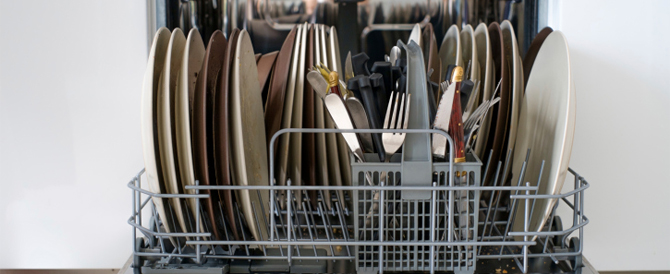For most homeowners, major appliances – refrigerators, washing machines/dryers, and dishwashers – account for the second-largest percentage of their monthly utility bills (just behind heating and air conditioning units). That impact is compounded if a refrigerator or washing machine is more than a decade old, causing homeowners to spend even more on energy.
Today, most major appliances use significantly less energy than older models do – even ones purchased just a decade ago! This is primarily because today, major appliances must meet minimum federal energy efficiency standards that have been tightened over the years; so any new appliance you buy today has to use less energy than your old model. In fact, if you purchase the top energy-efficient refrigerator on the market, it will use less than half the energy of a similar model that’s 10 years old or older.
Of course, efficient appliances don’t just save you money; they’re good for the environment as well. The less energy we all use, the lower the demand on power plants, which translates to less pollution. For today’s post, we wanted to offer some suggestions for folks looking to have their kitchen remodeled and/or replace their current appliances. Here are 5 tips for choosing appliances wisely:
Tip 1: Look for the Energy Star® label.
Energy Star® models are the most energy efficient in any product category. These appliances feature an Energy Star® label, which identities them as appliances that exceed the energy-efficiency minimums set by the federal government. In some parts of the country, utilities and state governments even sweeten the deal by offering rebates on Energy Star®-rated models. You can check here to see if your state offers any rebates for purchasing Energy Star® appliances.
Tip 2: Use the EnergyGuide label.
In addition to looking for the Energy Star® labels, you should also utilize the EnergyGuide labels as well. All new appliances must carry the EnergyGuide label, either on the appliance itself or on the packaging. This label allows consumers to compare the average annual energy consumption and operating costs of different models of any type of appliance you’re thinking of buying.
Tip 3: Get the right size.
Make sure the product you’re buying is the size you want, but isn’t completely oversized for your needs. Oversized air conditioners, water heaters, and refrigerators waste energy and money–and in many cases don’t perform as well.
Tip 4: Choose appliances that run on natural gas rather than electricity.
Due to the current natural gas prices, it’s usually more efficient to burn natural gas in your home than to burn it at a power plant, convert the heat to electricity and then send the electricity over wires to your house. Look for dryers, stoves, and water heaters that run on natural gas.
Tip 5: Think long term.
Many of the most energy-efficient appliances cost more initially, but will save you more money in the long run than their bargain counterparts. When investing in quality, energy-efficient appliances, expect to keep them between 10 and 20 years. A more efficient appliance will soon pay for itself by lowering monthly utility bills over its lifetime in your home. So those lower bills will more than offset a higher purchase price. In addition, the latest resource-efficient washing machines and dishwashers not only save electricity; they also use a lot less water, which can greatly reduce your water bill as well.
Energy efficiency starts at home! With these 5 tips, you can greatly improve your home’s green factor while saving money at the same time. If you’re thinking about a kitchen remodel and are considering updating your appliances, be sure to reach out to the experts at MDV Remodeling for a fast, free estimate!
*image: alexdimitrov/Thinkstock

